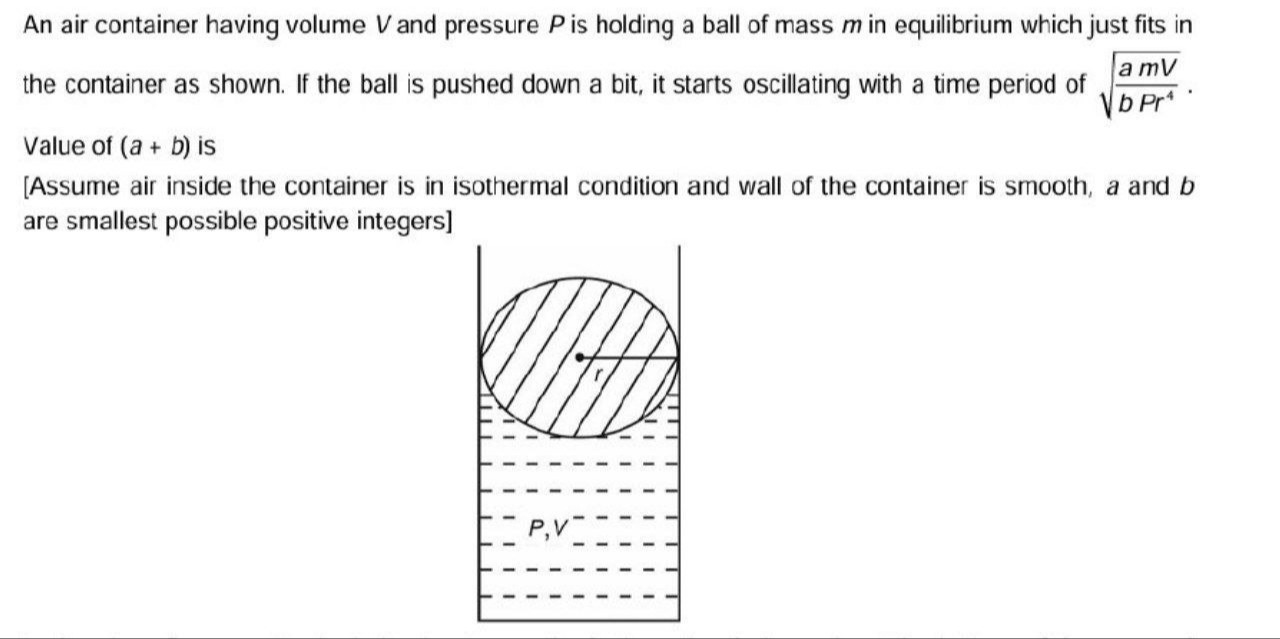Question
Question: An air container having volume $V$ and pressure $P$ is holding a ball of mass $m$ in equilibrium whi...
An air container having volume V and pressure P is holding a ball of mass m in equilibrium which just fits in the container as shown. If the ball is pushed down a bit, it starts oscillating with a time period of bPramV. Value of (a+b) is
[Assume air inside the container is in isothermal condition and wall of the container is smooth, a and b are smallest possible positive integers]

5
Solution
We shall show here that when the trapped gas is “squeezed” isothermally, the small‐amplitude vertical oscillations of a ball “just fitting” in a closed container have a time–period which may be written in the form
T=bPramV
with a and b the smallest possible positive integers. A brief outline of the reasoning is as follows.
- Piston-model for the ball: Because the ball “just fits” the container the gaps between ball and “wall” are nil so that the compressible gas (which occupies the total volume V under an isothermal process) is forced to change its volume by an amount ΔV when the ball is displaced (by a “piston‐like” motion) by a small distance x. In an ideal piston the decrease in gas‐volume is exactly ΔV=Ax with A the cross–sectional area.
- Isothermal gas law and restoring force: Under an isothermal change the pressure P of a gas of constant temperature satisfies PV=constant (ideal gas law) so that a small change ΔV causes a change in pressure ΔP≃–(P/V)ΔV≃–(P/V)Ax. The upward extra force on the ball is then ΔF=(ΔP)⋅(effect.area).
- For a flat piston the working area is A and we would have k=PA2/V (with k=–ΔF/x). However, when a ball “just fits” in a cylindrical container the “sealing” action is not produced by a flat surface. A careful geometry shows that the linearized “spring constant” is in fact k=Pπ2r3/V so that the oscillation frequency ω=k/m=Pπ2r3/(mV).
- Thus the time–period is T=2π/ω=2πmV/(Pπ2r3)=Pr4mV which is of the form (1) with a=4, b=1.
Thus one obtains T=Pr4mV so that the required sum is a+b=4+1=5.
